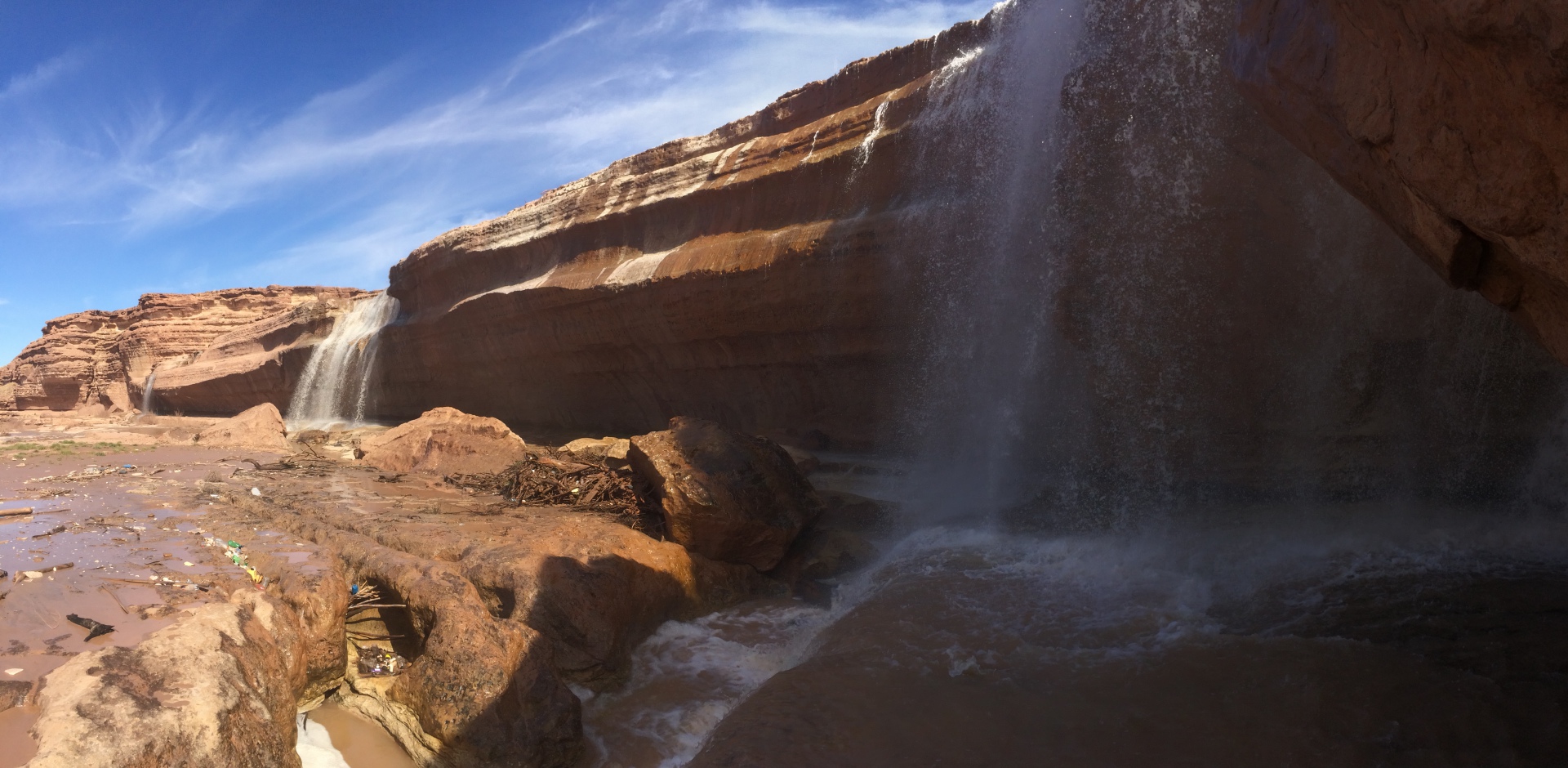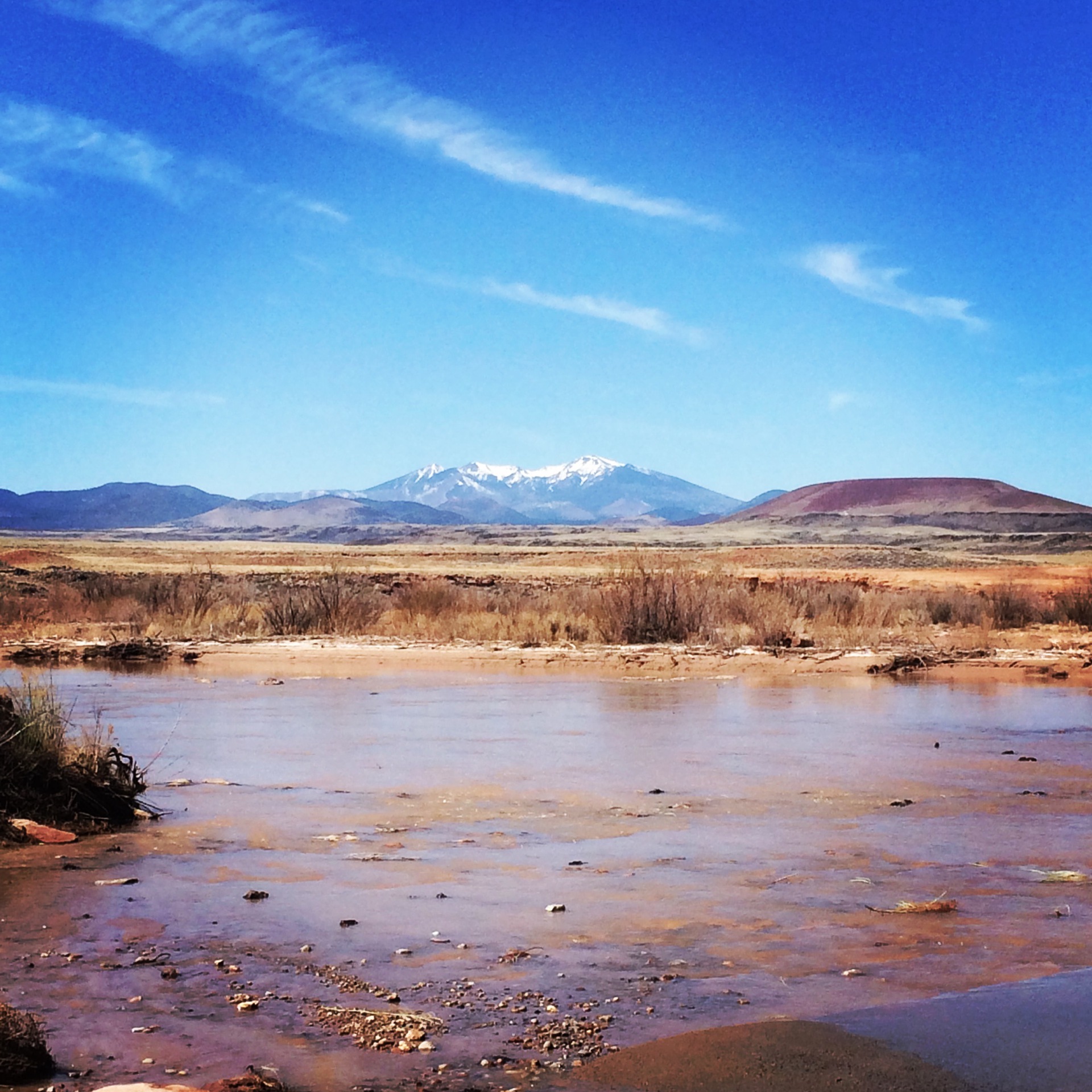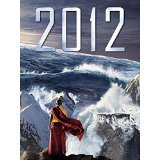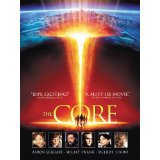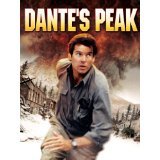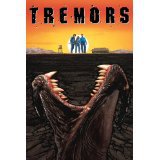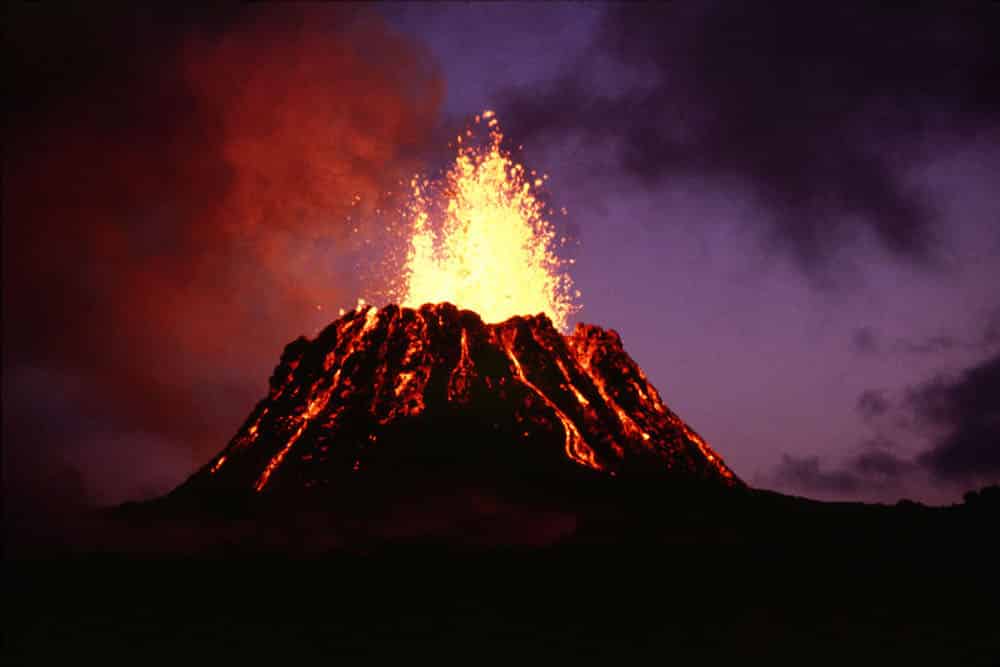
by The Goat | Mar 31, 2020 | Geology, Movies
#4. 2012

Geologic Sin Meter: Mayan Calenderiffic
This rating indicates that the geologic sins in this movie are so outrageous, the world may actually come to an end.
Movie Background:
The premise of this movie is based on the wild rumors that circulated the internet leading up to 12/21/12, or the day when the Mayan calendar ended. Ceaseless debates raged over the meaning of this, and hypotheses ranged from the rather benign idea that the Mayans simply didn’t finish the calendar, to the apocalyptic view that the entire universe was at risk of collapsing to a singularity and that all life would cease to exist.
One of the more interesting theories, the one depicted in this movie, is that the Mayan Calendar’s end predicted that the Earth’s core would begin to rapidly heat up from the neutrino bombardment of an increased number of powerful solar storms and bursts. The thinking behind the general apocalypse hypothesis is that the Mayan Calendar is strongly tied to solar and planetary activity. The Mayans counted a”Bak’tun”, or calendar cycle, as periods of 400 years that roughly counted star and planetary alignments. The calendar itself originated around 3114BC, and the 13th Bak’tun ended on December 21, 2012.
 |
| The Mayan Long Count Calendar
Courtesy livescience.com |
Doomsayers, prophets, experts, academics, and the general public caught onto this cycle ending, and the fervor surrounding the end of the cycle resulted in a media firestorm starting circa 2005. It spawned numerous movies, television programs, books, articles, and pundit panels, each trying to predict what the end of this calendar cycle was trying to predict.
However, nobody bothered to ask Mayan descendants what they thought. I suppose the people who conceived of the calendar wouldn’t have any knowledge of it. The Mayan’s beliefs are not only ancient, but somewhat complex and easily lost in translation. The rough translation of the inscription at the end of the 13th Bak’tun indicates that God will appear on Earth, although it is not clear what will happen at that point. Of course, most people took this to mean that the end was nigh, when in fact the Mayans were actually a very positive and forward-thinking culture. To them, the end of a cycle simply meant the beginning of something new, although it is still unclear as to what they predicted that new beginning would be at the end of the 13th Bak’tun. Despite this lack of clarity, most Mayan scholars and descendants did not believe that the calendar predicted the apocalypse.
Thankfully, this did not stop Hollywood and others from capitalizing on the marketing monster that is the apocalypse, and the movie 2012 was released in 2009. Directed by Roland Emmerich (The Day After Tomorrow, White House Down), and starring John Cusack (writer Jackson Curtis), Chiwetel Ojiofor (Dr. Adrian Helmsley), Danny Glover (President Thomas Wilson), and Woody Harrelson (Charlie Frost), the movie revolves around the idea that the core heats up rapidly, detaching the lithosphere (crust) from the mantle causing the tectonic plates to spin like a gyroscope.
Dr. Helmsley (Ojiofor), a geophysicist, along with an astrophysicist colleague, have discovered this phenomena in the world’s deepest copper mine, and alert the powers-that-be of their findings. This sets in motion a plan to save a fraction of the world’s population by building giant “arks” that will be able to navigate the impending destruction and start civilization anew. The “arks” are, of course, reserved for world leaders and the opulently wealthy, leaving the rest of us poor dregs to be caught up in the apocalypse.
Jackson Curtis (Cusack) is a failed writer that has been recently divorced from his wife (Amanda Peet). On his custody weekend, he is taking his kids to Yellowstone for a bit of bonding (long drive from LA, but I digress…). Upon arrival at Yellowstone, they pick up the broadcast of local nut Charlie Frost (Harrelson) who is predicting, what else, the end of the world.
As worldwide geologic disasters begin to occur, it is up to Curtis to get his family to the “arks” before it is too late.
Geologic Background:
The Earth has three layers that can be subdivided further based upon physical and chemical behavior. For our purposes here, I will discuss the general divisions.
 |
| Animated rendering of the Earth’s layers
Courtesy youtube.com |
Crust (lithosphere):
Roughly 30km of cool, brittle, felsic continental and oceanic plates that are composed of mostly light elements such as oxygen and silica (78%). This is what we live on. The relatively light (less dense) crust is divided into 13 buoyant segments, or tectonic plates, that “float” on the more dense, mafic mantle. These plates are constantly in motion due to convention currents in the mantle.
Mantle (asthenosphere):
the non-molten, soft, ductile layer under the crust that is roughly 5000km thick and composed of magnesium, iron, nickel, and other heavier elements. Although it is physically similar to the core (the upper mantle is still solid), it is chemically different and seismic waves behave differently at the boundary, indicating a chemical composition change.
Core:
The molten iron center of the planet that serves as the power plant for our world. Without the core, the Earth’s magnetic field would not exist, and life would not be possible. The heat in the core is generated by the radioactive decay of this iron-nickel alloy, and cools at a rate of roughly 100 degrees C per billion years. It is currently theorized to be roughly the same temperature as the surface of the sun.
These three layers are closely linked. The core drives heat into the mantle, causing convention currents that drive motion in the crust. The dynamic nature of the Earth system drives the rock cycle, water cycle, volcanism, earthquakes, and all other phenomena on our planet.
Basically, they are the chemical remnants of the accretion of the Earth from rocks and gas in the solar system at 4.6Ga, and are divided by physical and chemical differences at transitional boundaries. They are not separate, nor separable, and none can behave nor exist as they do independent of the others. This is the reason that Mars is theorized to have once been like the Earth, but is now “dead”; meaning that the core has burned all of its energy, the magnetic field has failed, and a once live, dynamic planet is now a giant, floating rock.
Geologic Sin QnA:
The entire concept of this movie is one long, geologic sin, but I will attempt to hit the high points.
Could the Earth’s core begin to suddenly and rapidly heat up due to solar activity?
In short, F No. The heat in the core is driven by thermodynamics, i.e. radioactive decay. The heat of the core has about the same effect on the heat of the sun as solar activity has on it. In the core, as Uranium and Thorium ions decay, meaning they lose alpha and beta particles, these reactions give off heat, which accounts for the sustained and massive amount of energy in the form of heat that is produced in the core. Solar winds, flares, storms, and anything-else sun-related have absolutely no effect.
In addition, for the energy, and therefore the heat in the core to rise, would require violations of the laws of thermodynamics, most in particular the first law. The first law of thermodynamics states, among other things, that in a closed system energy can neither be gained or lost. This is called the law of conservation of energy or mass, and essentially means that all the energy that exists in the core will be transferred, not lost or gained.
The premise of the idea that the core temperature could suddenly increase, regardless of the cause, implies that energy is being added to the system, or that radioactive decay has accelerated. In either case fundamental laws of science are violated. Bummer.
The movie tries to skirt this by the idea that neutrinos (a real energy particle) are radiating from these solar flares causing a microwave effect on the core. If this were the case, these neutrinos would kill all life and strip the surface of the Earth long before it heated the core by any measurable standard. Neutrinos are radioactive subatomic particles that simply pass through matter anyhow, so their behavior would have to suddenly change in order to for this occur.
Could the tectonic plates detach from the mantle (Earth Crust Displacement Theory)?
Theoretically, if the core did, in fact, heat rapidly for some reason, it is possible that convection currents in the mantle would become more powerful leading to increased motion of the tectonic plates. Although the plates would not actually detach, they may move more abruptly.
However, this would require a very specific amount of heating, and would still not cause the Earth to behave like a gyroscope. What is more likely is that increased temperatures in the core would cause increased temperatures in the mantle which would cause melting of the crust. Volcanism would certainly accompany this, and if a certain temperature was reached, the crust may turn molten (after all, the Earth was at one time a giant lake of fire). Although catastrophic, particularly for anything living, it would not result in what is seen in this movie.
Would this cause the Yellowstone Super Caldera to erupt like in the movie?
Quite possibly yes. Let’s assume that the main postulation is theoretically possible and the core does begin to spontaneously heat up. If this were to happen, more energy would be driven into the mantle. This absolutely would cause increased volcanism at the surface.
The Yellowstone Caldera sits atop a “hot spot” or mantle plume (depending which theory you buy). Although the precise causes for these regions are still debated (some scientists theorize that they are the result of convection in the mantle melting the lithosphere, some theorize they originate deep in the mantle), they do exist and Hawaii is the most famous. These areas are weak spots in the lithosphere where magma from the mantle pushes closer to the surface. The magma chamber that powers Yellowstone’s geysers, mudpots, and fumaroles is roughly the size of the state of Maine.
If the mantle were to become volatile due to core energy release, the result would almost certainly be catastrophic volcanism all over the world, the Yellowstone Caldera included. If it did erupt, the results would be actually similar to what is portrayed in the movie. However, you would not be able to outrun it the way the Jackson Curtis did (cough, BS, cough), particularly if you are anywhere near the caldera itself. The pyroclastic cloud would be traveling faster than the speed of sound near the eruption, and anything short of an F-16 would have no chance of outpacing it.
Jackson, along with his ex-wife, two kids, and wife’s new boyfriend Gordon, escape in a small aircraft and make it to Las Vegas, where they again must outrun the Yellowstone ash cloud. Las Vegas is roughly 750 miles from Yellowstone, which means that the cloud would reach the city. However, it would not reach it looking the way it did in the movie as a low altitude menace. By that point the cloud would begin to circulate into the atmosphere, and although debris from the eruption may land in Vegas, it is very unlikely that the pyroclastic cloud in all of its glory would reach quite that far.
Would this cause worldwide earthquakes?
Quite possibly yes. Again assuming that any of this could happen, increased convection in the mantle may well cause increased motion of the tectonic plates, which in turn may result in potentially catastrophic earthquakes. Earthquakes occur when plates move against one another, get stuck, and then release causing energy to be released. They also often occur as precursors to volcanic eruptions, and we have already discussed that would likely be part of all this madness as well, again, assuming that you want to assume the assumptions.
However, a 10.9M earthquake on the Moment Magnitude Scale is something that is not theoretically possible. But, as I have been saying, if you want to simply make up words like “Earth Crust Displacement Theory”(the basis for all of these disasters), I suppose real science is not actually relevant.
Could a tsunami crest the Himalayas?
This is a tough one. Given that many of the assumptions that would cause this theoretical wave are ridiculous and inaccurate, it is impossible to say whether or not they would cause a 10000m high tsunami that envelopes the world’s highest mountains. In the movie, the wave is described as 1500m high, which would barely crest the front range of the Rockies, much less the Tibetan Plateau which sits at an average of 4000m. Did the Plateau sink? Again, mostly nonsense here.
Could geophysics predict the exact time that the wave would hit?
No. Given the unpredictability of all of these occurrences, the idea that one could approach with any level of certainty when and where things will happen absolutely is completely ludicrous.
What does any of this have to do with the Mayan Calendar?
Not a damn thing. Period. Its mentioned in the film a couple of times as the “Long Count Calendar”, but does not necessarily play an integral part even though its cycle ending and the hype surrounding it are presumably the only reason this film even exists. The calendar is said to predict planet alignments; the one at the end of the 13th Bak-tun is said to occur every 640,000 years. In geologic time, this is the blink of an eye, and there is no such occurrence like this in the geologic record.
Final Word:
There are even political inaccuracies in this movie, as Carl Anheuser, White House Chief-of-Staff, is thrust into the Presidency after the deaths of both the VP and the POTUS. Never mind that CoS is not named in the chain of succession, and the Speaker of the House is 3rd in the succession line…..But this is a topic for a political blog, and The Goat only concerns himself with rocks.
Other than the blatant disregard for any real science, this is an entertaining, albeit long movie (running time 158 minutes). John Cusack always delivers intriguing performances, and the supporting cast is strong with seasoned actors and Hollywood mainstays such as Woody Harrelson, who adds an excellent comedic tone to an otherwise darkly-toned movie (many billions of people die, albeit without much blood or gore, including some of the main characters and a small dog).
The special effects are quite astonishing as the disasters occur, and like many apocalyptic movies, is at least thought-provoking as to how individuals might deal with the end of the world. There are the requisite selfless and selfish characters, interpersonal relationships and conflicts, family ties, and the unwavering dedication to survival and salvation in this movie.
At the end of the day, I always like to watch these kind of movies, and Roland Emmerich typically delivers a fun ride that is sure to pack excellent stunts, effects, and action. Watch it, enjoy it, laugh at its intrinsic ridiculousness, and have fun. Cheers!
May The Goat be always with you
(Videos courtesy youtube.com)
by The Goat | Mar 27, 2020 | Geology, Movies
#5. San Andreas

Geologic Sin Meter: Apocalyptic
Though this meter is obviously subjective and somewhat vague and arbitrary, it does bear some explaining. Basically, the more hyperbole in the rating, the more egregious the sins against science. Pretty simple I suppose. The Apocalyptic sin meter rating for this movie indicates that there are numerous accounts of phony science and, in many cases, flat-out nonsense. Now let’s get to it.
Here is how I will break down each of these movies: I will begin by putting forth the geology that is addressed in the movie and give some general background. Then, I will address each geologic occurence/question/theory/etc. in each of these movies and explain/discredit/endorse its validity. I may use some terminology that is not layman, but I will do my best to keep it relatively simple.
The Background:
This movie is based on the idea that a heretofore unseen earthquake of magnitude 9.6 (Richter Scale) occurs along the famous San Andreas Fault in California. The fault and its system at-large is a strike-slip system, meaning that its motion is lateral as oppose to up and down that you might find in a subduction zone. It runs roughly from the Gulf of California and the Baja Peninsula to its end in the ocean north of San Francisco about 0.5 miles offshore (figure 1).
 |
| Figure 1: courtesy sanandreasfault.org |
It has been responsible for several large earthquakes, including a 9.1M that struck San Francisco in 1906 that resulted in the near total destruction of the largely wood-built city. It also famously slipped during game 3 of the 1989 World Series between the A’s and Giants at a 7.5M, resulting in the structural failure of several bridges in the Bay Area, as well as billions of dollars in damage.
Faults occur along weakness in the lithosphere (crust) that allows the crust to move and slide along planes. Faults are particularly likely to exist where tectonic plates are converging, diverging, or transforming. Since the Earth’s tectonic plates are in constant motion, thousands of earthquakes occur each day all over the world, though the vast, vast majority are too small to detect by anything but seismic equipment.
What is the San Andreas Fault?
The San Andreas fault system is the child of the North American and Pacific tectonic plates that are moving in opposition to one another along their boundaries in the southern California region (figure 2).
 |
| Figure 2: courtesy livescience.com |
This motion causes the plates to grind against one another. Pressure builds at certain points along the system and when the point can no longer withstand the pressure, it gives causing energy to be released radiating in concentric circles from the point. These waves of energy are what cause earthquakes, and are called S-waves and P-waves. The P, or body waves, arrive first and are the marker for seismographs. S-waves arrive shortly thereafter, and cause the ground to shake perpendicular to the motion of the wave.
The largest earthquake to ever be recorded was a 9.5M off the coast of Chile in 1960 (this fact is given to the audience in the movie). This occurred in a subduction zone, where the Pacific plate is “ducking under” the South American plate causing pressure to build. These zones can cause particularly catastrophic earthquakes. Though the San Andreas has produced a 9.1M, it is theorized that it is unlikely that a 9.5M or greater could occur.
A sidenote here: The Moment Magnitude Scale, the measure of the energy released by earthquakes, is base 30 logarithmic, meaning that each division is 30 times more powerful than the last. For reference, a 9.5M earthquake is 30 times more powerful than a 9.49M earthquake. This means that the 9.5M recorded in Chile was 1200 times more powerful than the largest quake ever recorded in the San Andreas system.
The Geology Sin Counter QnA Session:
Could a 9.6M earthquake occur along the San Andreas fault system?
The short answer is theoretically yes, but it has never been recorded by seismographs, nor in the rock record where geologists can study fault zones and rocks deformed by earthquakes to measure the stress placed on the rock. This does not mean it could never happen, but most models predict that the most powerful earthquake the San Andreas system could produce is roughly a 9.2M, which is still cataclysmic, but not nearly as devastating as the earthquake in the movie.
Could a 7.5M earthquake occur at Hoover Dam?
In the movie, the precursor to “the big one” comes in the form of an earthquake that destroys the Hoover Dam, quite spectacularly I might add. The short answer here, is likely no. Though there are faults in the area of the dam, none of them has the capacity to build and release the energy for a 7.5M EQ. Rest easy dam-goers, you should be okay. In addition, any structural engineer will tell you that the Dam would not buckle so easily as it did in the movie should such an event occur.
Can seismologists predict earthquakes with 100% certainty?
The answer here: In short, hell no. In the movie, Paul Giamatti’s character has created software that uses seismic pulses to predict with 100% analytical certainty that an earthquake will occur, and even goes so far as to claim that they can predict the location of the epicenter, and the magnitude on the impending quake.
Frankly, this notion is laughable. Any geologist who tells you they can predict earthquakes or volcanic eruptions with any absolute certainty is selling snake oil. The Earth is a dynamic living thing, and predicting its actions with any degree of certainty is like predicting what a teenager might do while driving a vehicle. You can monitor, theorize, gather data, poke, prod, bother, and vex, but you cannot ultimately say with any absolute surety what is going to happen once they get behind the wheel.
Would a quake along the San Andreas open up long canyons, exposing the fault line?
Once again, in short, not a chance. This goes back to the type of fault the San Andreas is, a strike-slip. This motion is lateral. For a canyon to open, such as one in the movie, the Pacific and North American plates would have to suddenly begin to shift away from each other, resulting in a divergent plate boundary, that may then open up a gaping chasm in the Earth. It is a cool visual effect in the movie, but violates fundamental geologic laws of motion.
A quake of magnitude 9.5 would certainly leave its scars on the surface, just not a gaping canyon.
Would skyscrapers liquefy in the presence of a quake of this magnitude?
Although the destruction would be massive, and the damage horrific, it is highly unlikely that structures such as the TransAmerica Tower would suffer the fate they did in the movie. In fact, many of the skyscrapers in San Francisco may be some of the safest places you could be in a quake. They are engineered specifically to “sway” with the motion of the quake. For a moment. imagine San Francisco is built of Jell-O on a table. Shake the table as violently as you can, and it is likely that the Jell-O, though it will show some signs of damage, will still be standing. These are the same principles that went into the engineering of most of the modern structures in the city.
In short, no, this would not happen.
And the $1,000,000,000 question: Would this earthquake result in a 100m-high tsunami that eats the city?
Once again, my answer here is short and sweet: Absolutely not a chance.
The San Andreas, in addition to being strike-slip which would not displace the amount of water that an earthquake in a subduction zone would (think Sumatra 2004—>That was a 9.1M on a convergent boundary), it is also 95% terrestrial, meaning that even if it could displace that amount of water, there is no water to displace. Near San Francisco, the fault briefly leaves land and goes into the sea, but even the most catastrophic quake would result in waves only 2-3m in height, a far cry from the monster wave that was eating oil tankers in the movie.
The Final Word:
So there we have it folks: the Geologic Sin Meter broke during the making of this movie. Still, this is actually a good movie, with a solid performance from The Rock, as well as Australian beauty Alexandra Daddario and Oscar-Winner Paul Giamatti. The entertainment factor is high, and the special effects are excellent, even breathtaking. If your goal is pure entertainment, which is typically mine when I watch a movie like this, then you will have come to the right place. All other things being equal, I will watch this movie and enjoy it, though I will be forced to bury and hide my scientific BS detector. Enjoy it folks!
Chef-Driven Outdoor Experiences
Hiking and exploring in the outdoors, or any of our public lands, is a special experience. Although it is possible to see these places yourself, hiring a guiding outfitter is a great idea. For instance, guiding services provide logistical support, and plan everything for your best possible trip. They provide a great safety net on the trail, and are trained in backcountry medicine. Above all, they provide a depth of knowledge of the region that turns a walk into a true adventure.
Canyons and Chefs provides all of the support you need, and pairs that with professional chefs and expert geologist/guides. Our meals use fresh ingredients and are inspired by local farms, culture, and cuisine. We utilize a mobile professional kitchen as a backbone for cooking over the fire. Furthermore, we provide top-of-the-line gear and passion for the places we explore. In conclusion, you can these wild places, but going with a guide can create an even more memorable experience. Don’t be shy, and call us!
Read our blog!
For adventure Chef-Driven Outdoor Experiences, see our epic tours in Grand Canyon, Utah, and Arizona!
Follow us on Facebook and Instagram
Explore Further, Be Wild, Eat Like Kings —
Canyons and Chefs

by The Goat | Mar 26, 2020 | Geology, Movies
#1: Tremors

Look Mom, weird prehistoric underground monsters!
Geologic Sin Meter: Graboid-Tastic
Geologically speaking, this classic goofball sci-fi flick is nearly devoid of sins, although there is a major biological question that is presented. Though science is really not the focal point of the movie, geology plays a significant role. Characters “hide” using rocks, the geology of the area is discussed as a means of escaping the monsters, the fossil record is discussed, and there is even quite a bit of geology lingo such as “pleistocene alluvium” and “precambrian”. Many shots in the movie are of beautiful rock formations and the gorgeous basin and range topography of southern Nevada. As a bonus, a large cliffed-out canyon is the means by which the last “Graboid” is dispatched of. Geology!
Movie Background:
Welcome to Perfection Valley, Nevada. Population: 14. Then 13. Then 12. Then 10. Then some unfortunate road workers. Val (Kevin Bacon) and Earl (Fred Ward) are local handymen trying to change their dead-end existences by leaving Perfection forever, but they are compelled to stay when the townsfolk begin to disappear under strange circumstances.
Rhonda (Finn Carter) is a PhD candidate seismologist, studying the area with seismographs trying to get a beat on seismic activity. Together, they discover and then outrun underground worm-monsters that devour everything in their path, and have to save the people of Perfection from a gruesome demise.
Geologic Background:
There are a few geologic angles to this movie. The science of seismology, the geologic province in which these monsters are found, as well as paleontology and the fossil record.
Seismology is officially defined by Webster’s as “the study of earthquakes and the propagation of seismic waves through the ground”. These scientists are commonly referred to as geophysicists, and are somewhat loosely related to geologists who study physical rocks and their deposition.
Seismologists or geophysicists are more interested in using seismic waves to infer subterranean geology, and their work is the basis on which our theories about the interior of the Earth (the mantle and core) are derived.
They are also interested in monitoring seismic activity in the subsurface to make inferences and predictions about earthquakes and earthquakes hazards/risks. Nearly all seismologists and/or geophysicists have geology backgrounds, but chose to do their graduate work in the more specialized field.
 |
| A seismograph (courtesy American Geophysical Union) |
In the movie Rhonda LeBeck (Finn Carter) is a graduate student from MSU (?) as denoted by the initials on her seismic equipment. Although it is unclear exactly what she is studying, she is using the seismographs to gather information about seismic activity in the area.
A seismograph is a tool used by seismologists to gather information about energy and motion in the Earth, specifically during earthquake events. They are very useful in determining the force and duration of seismic events, and play the role in this movie of alerting our heroes that a Graboid is near (Yay!).
The geological province in which the movie is set is known as the Basin and Range. It extends west, south, and southwest from the Colorado Plateau, essentially from northern Arizona and New Mexico south well into Mexico, and west from Las Vegas to the Sierra Nevada.
 |
| Map showing the location and general extent of the Basin and Range province (courtesy earthscope.com) |
The province is characterized quite literally by low basins in which sediment accumulates, and northwest-southeast trending mountain ranges that are bound by normal faults. It is an area of extensional-type tectonics, meaning that the crust is being pulled apart or rifting.
The prevailing theory for how the Basin and Range has come to be is related to the Laramide Orogeny that built the Rocky Mountains. Long ago (80-55Ma), the Farallon tectonic plate subducted the North American plate, building the Rockies.
 |
| A cartoon rendering of the subduction of the North American plate by the Farallon plate (courtesy usgs.com) |
At some point between 5-15Ma, a piece of the Farallon plate snapped off, and is currently “floating” in the mantle under the modern-day Colorado Plateau as suggested by current geophysical research. As a result of this “floating”, the western portion of the North American continent is “sliding” westward, creating this large area of extensional tectonics. In fact, geologic research indicates that San Francisco, CA was once located near what is now Flagstaff, AZ prior to the extension taking place.
 |
| A timelapse rendering of the action of the Farallon, Pacific, North American, and other related tectonic plates to create the Colorado Plateau, Rocky Mountains, and Basin and Range province (courtesy usgs.com) |
Paleontology and the fossil record also play a critical role, as it is one of the central question of this film, “where did these things come from?” There is a debate amongst the three central characters as to the answer of this question, and one of the theories put forth is that they pre-date the fossil record.
The fossil record goes back roughly 3.6 Billion years, beginning with an animal known as the Stromatolite, which essentially is algae. Life on Earth existed as single-celled organisms for hundreds of millions of years until the “Cambrian Explosion”, wherein many vertebrate fossils begin to appear and there is a proliferation of diversity in life.
From there life moved out of the seas and onto land, and evolved into humans and all the variation of creatures that we see today. This is obviously an extremely simplistic and stunted version of this story, but we only have so much space here.
Where do Graboids fit into this story, you may ask? Well, that answer is the main part of our Sin QnA.
Geologic Sin QnA:
Could an animal like this really go unnoticed for that long?
 |
| A Graboid in all its glory (courtesy pophorror.com) |
Herein lies the main geologic, or more aptly biologic sin of this movie. In terms of evolutionary biology and ecology, the existence of the Graboid is a near impossibility. How could an animal this large and voracious have possibly gone undiscovered, or have even evolved? Well friends, on both counts it almost certainly could not have.
Strip away everything else for a moment, and it still seems highly unlikely. Never mind that these animals have nothing to move their giant bodies but small spikes, and that they only exist just below the ground. Never mind that to have evolved into this form would have taken tens, if not hundreds of millions of years and lots and lots of large food or an extremely efficient metabolism. Never mind that, despite feeding on livestock and humans, nobody has ever seen them.
Take all of that away, and what we still see is a creature that, in its current environment of the Perfection Valley, is all but locked in by hard-rock mountains on each side, large, sheer-cliffed canyons on the other side, and a serious lack of a reliable food source even if they did escape the valley. The Mojave desert is a wild and inhospitable place, particularly for large predators like a Graboid. Maybe the occasional Bighorn Sheep would do the trick?
Debating anything beyond simply the vacuum existence of these creatures is pointless, and the deeper you delve the more reason you find that, scientifically speaking, it is a near biological and evolutionary impossibility for these creatures to exist in this state, essentially crushing the main attraction of this movie. Bummer, because it would be super cool to see a Graboid.
However, it does still leave the possibility that they are extra-terrestrial. But…..They could not have survived the impact of an asteroid that would have deposited them, nor do they seem capable of constructing and piloting their own ship. Maybe they were placed here by more sophisticated aliens or even human beings?
The placement theory could be interesting, as it was suggested in the movie. Val surmises that they are an invention of the Russians. This suggestion, made during the waning years of the Cold War, is absolutely possible, maybe more so than any other legitimate suggestion. I
t is possible that they were created in a Soviet genetic laboratory, deposited as babies in the remote areas of the Mojave Desert, and survived and grew as they fed on the local cuisine of coyotes, bighorns, the occasional lost hiker, and eventually the people of Perfection. Was it the intention of the Soviets to have these animals infiltrate a large city like Las Vegas or Los Angeles and create mass panic and confusion, thereby giving the Soviets an opportunity to seize the moment and overtake our government? Seems likely :).
Is the geologic terminology used correctly?
Yes. A few geologic lingo drops are to be found, including a reference to “pleistocene alluvium” and “precambrian”, as well as discussions of topography, which is dictated by geology. Pleistocene alluvium, or more simply referred to as “dirt” by Rhonda to her slack-jawed audience, is exactly what collects in the basins of the basin and range.
Although is it more commonly referred to as Quaternary alluvium, this is still generally correct. What is the difference? The Pleistocene is an epoch (1.8Ma-10Ka) within the Quaternary era (1.8Ma-present), most precisely the epoch in which the last ice age occurred, ending roughly 10ka ago. We are currently living in the Holocene, which has its beginnings when the ice melted and the glaciers retreated.
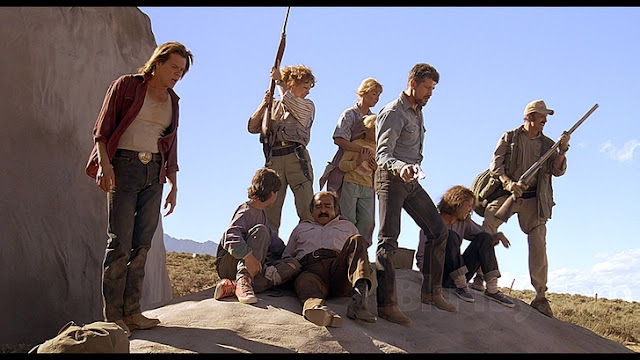 |
| The groups using geology to their advantage (courtesy pop horror.com) |
When someone is referring to Pleistocene alluvium, they are typically referring to sediment deposited by glaciers. In the basin and range, sediment is deposited in the basins by runoff from the mountains (ranges) following precipitation and mass movement events, and likely not from glaciers (even during the Ice Age). In addition, it would be very difficult, if not impossible to absolutely date this alluvium to the pleistocene era, which is why we geologists generally refer to unconsolidated sediment moved by water as Qal (Quaternary alluvium) on geologic maps.
What possible purpose would a graduate student in seismology serve in this area?
Well, the same purpose that any student of science would serve anywhere: To gather and record data that may be of use to major and groundbreaking scientific research. We all want the glory, and a few of us find it out in the field. More specifically, seismic research in the basin and range is important because it allows us to infer the location of active faults, which is useful in determining earthquake hazards.
Would the groups escape plan really have worked?
In short, yes. The Graboids are very adept at moving through the unconsolidated sediment that fills the basins. Heading for the mountains, and therefore the consolidated and lithified rocks such as granite and metamorphics such as gneiss that are typically found in mountains would have stopped the Graboids dead in their tracks. Geology, as usual, will save the day.
Final Word:
This is one of my, and many of my colleagues’ (hence its #1 ranking) favorite movies. Young Kevin Bacon trying to act cool to get the PhD-candidate seismologist, Fred Ward in a classically serious-yet-goofy role, country star Reba McEntire and Michael Gross as elephant gun-toting survivalists, and enormous, angry, hungry underground monsters that devour whole cars; could a movie possibly have more awesomeness? The correct answer is no.
For a fun fact, the movie was filmed just west of Death Valley in the Owens Fault Zone, and not actually in Nevada. However, these areas are quite similar geologically, topographically, and the scenery is very similar as well, so this is not so much of a sin as much as just the realities of Hollywood and its propensity to film in one place and call it another.
Despite the over-arching assumption the movie makes that these monsters have escaped discovery for thousands of years and have no fossils because they pre-date the fossil record (or something else?), this movie is just simply so fantastically goofball entertainment that it really does not matter. Watch it; laugh, cry, scream, and smile until your jowls hurt, I promise that they will.
May The Goat be always with you
Going Guided
Hiking and exploring our National Parks, or any of our public lands, is a special experience. Although it is possible to see these places yourself, hiring a guiding outfitter is a great idea. For instance, guiding services provide logistical support, and plan everything for your best possible trip. They provide a great safety net on the trail, and are trained in backcountry medicine. Above all, they provide a depth of knowledge of the region that turns a walk into a true adventure.
Canyons and Chefs provides all of the support you need, and pairs that with professional chefs and expert geologist/guides. Our meals use fresh ingredients and are inspired by local farms, culture, and cuisine. We utilize a mobile professional kitchen as a backbone for cooking over the fire. Furthermore, we provide top-of-the-line gear and passion for the places we explore. In conclusion, you can explore these wild places, but going with an outfitter can create an even more memorable experience. Don’t be shy, and call us!
Read our blog!
For adventure Chef-Driven Outdoor Experiences, see our epic tours in Grand Canyon, Utah, and Arizona!
Follow us on Facebook and Instagram
Explore Further, Be Wild, Eat Like Kings —
Canyons and Chefs

by The Goat | Mar 26, 2020 | Uncategorized
Top 5 Best Bad Geology Movies of All-Time
One of the greatest (and possibly most irritating) pleasures of being a scientist is the plethora of movies that take something minutely theoretically possible, throw it in a pot with pseudo-science, and create a colossal disaster the likes of which the Earth has never seen. Very rarely does any real science make it into these “science-fiction” movies, but that is what makes them both fun and entertaining: the utter lack of reality or science.
Over the past two weeks, we have been gathering votes from our fans on social media naming their favorite geological disaster movies of all time. We have compiled the leading vote getters, so get ready to have your minds blown: Drumroll please…..
(All photos courtesy amazon.com)
#5. San Andreas
Premise: Cal-Tech University seismologists have created a predictive modeling software program for earthquakes that has 100% accuracy. This program predicts that the notorious San Andreas fault, a right-lateral strike-slip fault system on the transform plate boundary of the North American and Pacific plates, is going to rupture with a 9.6-magnitude earthquake.
An S+R helicopter pilot, played by Dwayne “The Rock” Johnson, needs to go through literally hell and high water with his estranged wife to rescue their daughter in San Francisco.
Destruction: The quake rips through Los Angeles and San Francisco, liquefying buildings, opening chasms in the ground, and as the coup de gras, creating a 100m high tsunami that completely inundates the Bay Area. Literally tens of millions of people are killed, trillions of dollars in destruction is created, and (spoiler alert), there is a happy ending.
Geology Sin Meter: Apocalyptic
(For a breakdown, visit The Goat’s blog at bluemarblegoat.blogspot.com)
#4. 2012
Premise: Geologists and Astronomers have discovered that the Mayan Calendar was, in fact, correct in its prediction of the “end of time”. The day: 12/21/12. Scientists realize that the Earth’s tectonic plates will “detach” themselves from the mantle and begin to spin wildly, ravaging the human race. They, along with various world leaders, put into motion a plan (large “arks”) that will spare the world’s best and brightest to begin society anew.
A failed writer, played by John Cusack, must get to one of these “arks” with his estranged wife (cough, cliché, cough), her new husband, and his two children along with a motley cast of characters including a Russian billionaire and his arm candy.
Destruction: The casualty meter in this movie along with the destruction is beyond cataclysmic. Ostensibly, billions of people are wiped out in a chain of disasters including earthquakes, the eruption of the Yellowstone Super Volcano, and worldwide tsunamis that crest the Himalayas (where scientists have pinpointed the exact time the waves will hit the “arks”). Essentially, the entirety of the human race and the world they inhabit are completely destroyed, so the scope of this movie is large to say the least. The running time is also cataclysmic, coming in at just over 3.5 hours (good god)
Geology Sin Meter: Mayan Calendariffic
(For a breakdown, visit The Goat’s blog at bluemarblegoat.blogspot.com)
#3. The Core
Premise: A university Geophysicist theorizes that the Earth’s molten core is cooling and dying given that the Earth’s magnetic field seems to be weakening (cell phones dying, birds flying north, etc.). So, a plan is hatched to bore to the center of the Earth with a machine built of a newly synthesized, indestructible element called “Unobtanium”. Armed with a laser that vaporizes rock, they tunnel to the core to set off a nuclear bomb to “restart” the core and save the planet.
Aaron Sorkin and Stanley Tucci play high-fallutin’ geophysicists (Tucci is signing autographs in one scene, and acts like a jerk through most of the movie), Hilary Swank plays an astronaut charged with commandeering the ship, and Delroy Lindo plays a long-discredited geochemist and rival of Tucci’s character. Together, the fearsome foursome must restart the Earth’s core and spare humanity from meteor showers, solar storms, and broken cell phones (In all reality, if the core died and the Earth’s magnetic field failed, life would not be possible on the planet).
Destruction: Not as much as one might think in this one. A few birds fall out of the sky, and cell phones hit the fritz, but the mass casualties and cinematic manner of destroying the Earth and everything on it are relatively non-existent. Most of the action is centered around the journey to the core, whereupon the ship encounters quite a few troubles including a layer of diamonds (LOL).
Geology Sin Meter: Off the charts. All joking aside, this is perhaps the most ridiculous movie ever made, “scientific” or otherwise.
(For a breakdown, visit The Goat’s blog at bluemarblegoat.blogspot.com)
#2. Dante’s Peak
Premise: An active volcano, similar to Mt. St. Helen’s, threatens to erupt and bury a small, idyllic Washington Cascades town. Enter Pierce Brosnan as a volcanologist, his team, and Linda Hamilton, mayor of the town during its busy summer tourist season. She predictably balks when Brosnan advises her to evacuate the town, and so ensues the battle between geology and humanity.
Destruction: Quite realistic eruption of a volcano and the fallout from it. Pyroclastic flows, lahars, ash clouds, volcanic bombs, preceding earthquakes, acid lakes, human-boiling hot springs, and the burying of a quaint little town. Not as many implied deaths as some others like 2012 or San Andreas, but that’s probably for the best. In a heroic turn of events, a grandma jumps into an acid lake and sacrifices herself for the group.
Geology Sin Meter: Volcanoriffic This movie is, for all intents and purposes, is quite geologically accurate. The eruption is measured and the team of volcanologists are closely monitoring signs of an impending eruption, while making no claims that they can actually predict it with any accuracy. Aside from a few ridiculous things such as outrunning a pyroclastic flow in a jeep, or driving that same jeep over extruding lava, this movie does itself scientifically proud.
(For a breakdown, visit The Goat’s blog at bluemarblegoat.blogspot.com)
And the #1 Best Bad Geology Movie of All-Time: Tremors
Premise: In the Perfection Valley of Nevada, way out in the badlands of the Mojave Desert, something is not quite right. When townsfolk start disappearing, a couple of local ranch hands (Kevin Bacon and Fred Ward) start trying to figure out what is happening. During their wild goose chase, they happen upon a student (Finn Carter) doing her PhD thesis on seismology in the area.
What they discover is nothing less than prehistoric underground monsters that hunt with sonar. Throw in Burt Gummer and Reba McIntyre as well-armed doomsday peppers, and you have yourself maybe the single greatest movie ever made.
Destruction: Houses get knocked down, a Volkswagon disappears beneath the Earth (and is found later by country music emanating from the ground), and Perfection Valley residents are terrorized by the large, slug-like monsters that shoot snakes from their mouths. Awesome!
Geology Sin Meter: Graboid-tastic The science in this movie is actually pretty solid, a surprise for such a goofy movie. The seismic sensors that Rhonda (Finn Carter) has set up can accurately detect the beast’s approach, as any kind of Earth or soil disturbance creates seismic waves. There is even a coherent discussion about the fossil record, and accurate conversation about the geologic time scale. Boom!
This is one of my personal favorite movies, as it is tongue-in-cheek funny with great performances by all the actors. It is fun, goofy, and foolish enough to be a good time for everyone. To boot, it stays true to not just the theoretical, but actual science (monsters notwithstanding).
(For a breakdown, visit The Goat’s blog at bluemarblegoat.blogspot.com)
So there it is people, your Top 5. Watch them over and over, they only get better with time, just like all things in geology. Read The Goat’s blog in the coming days for more deduction of the actual science in these movies, as well as discussions about scientific consultants that have worked on, or refused to work on many of these movies. So grab a bag of popcorn and a beer, grab a rock, and have good time! Cheers!
Going Guided
Hiking and exploring our National Parks, or any of our public lands, is a special experience. Although it is possible to see these places yourself, hiring a guiding outfitter is a great idea. For instance, guiding services provide logistical support, and plan everything for your best possible trip. They provide a great safety net on the trail, and are trained in backcountry medicine. Above all, they provide a depth of knowledge of the region that turns a walk into a true adventure.
Canyons and Chefs provides all of the support you need, and pairs that with professional chefs and expert geologist/guides. Our meals use fresh ingredients and are inspired by local farms, culture, and cuisine. We utilize a mobile professional kitchen as a backbone for cooking over the fire. Furthermore, we provide top-of-the-line gear and passion for the places we explore. In conclusion, you can these wild places, but going with a guide can create an even more memorable experience. Don’t be shy, and call us!
Read our blog!
For adventure Chef-Driven Outdoor Experiences, see our epic tours in Grand Canyon, Utah, and Arizona!
Follow us on Facebook and Instagram
Explore Further, Be Wild, Eat Like Kings —
Canyons and Chefs





